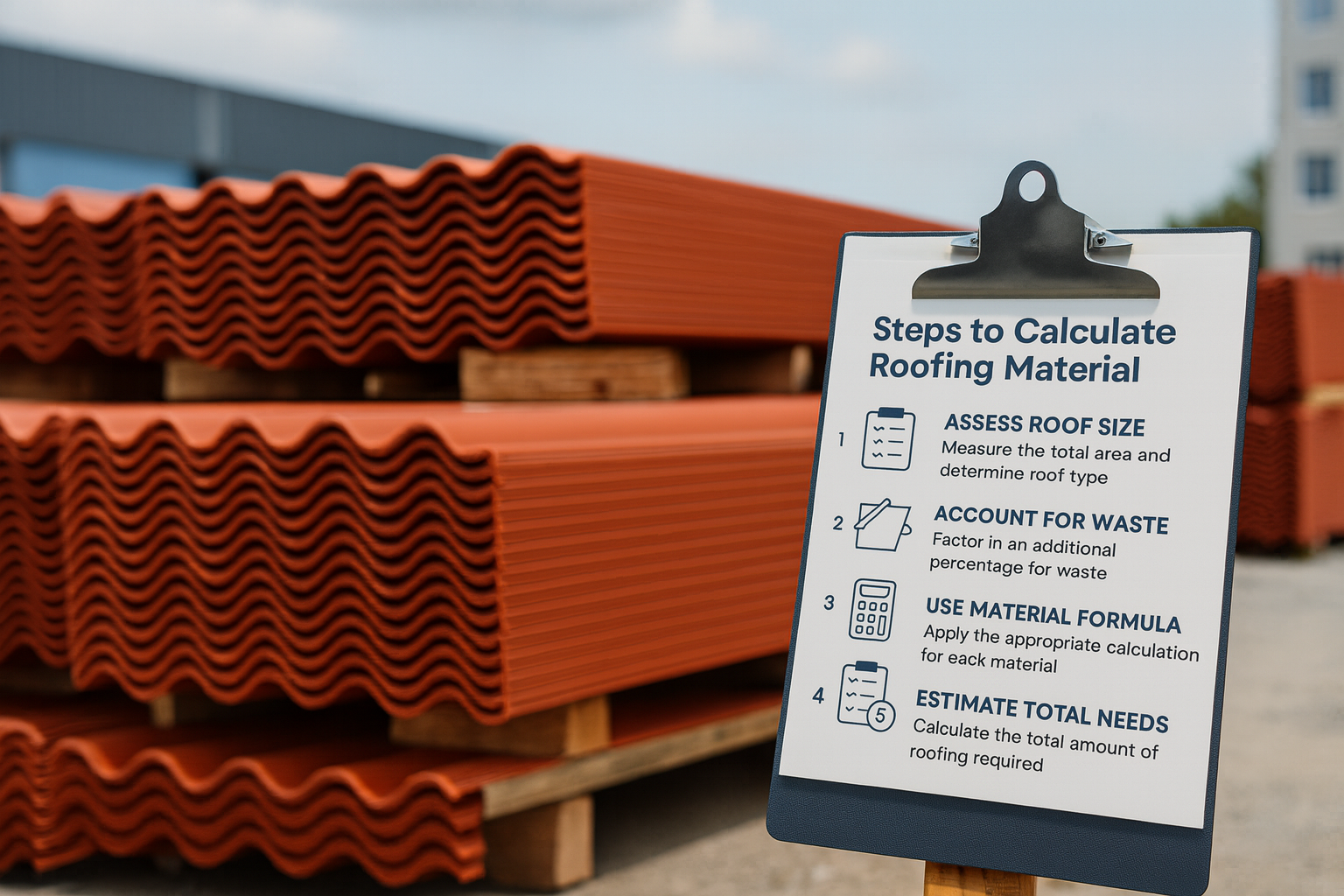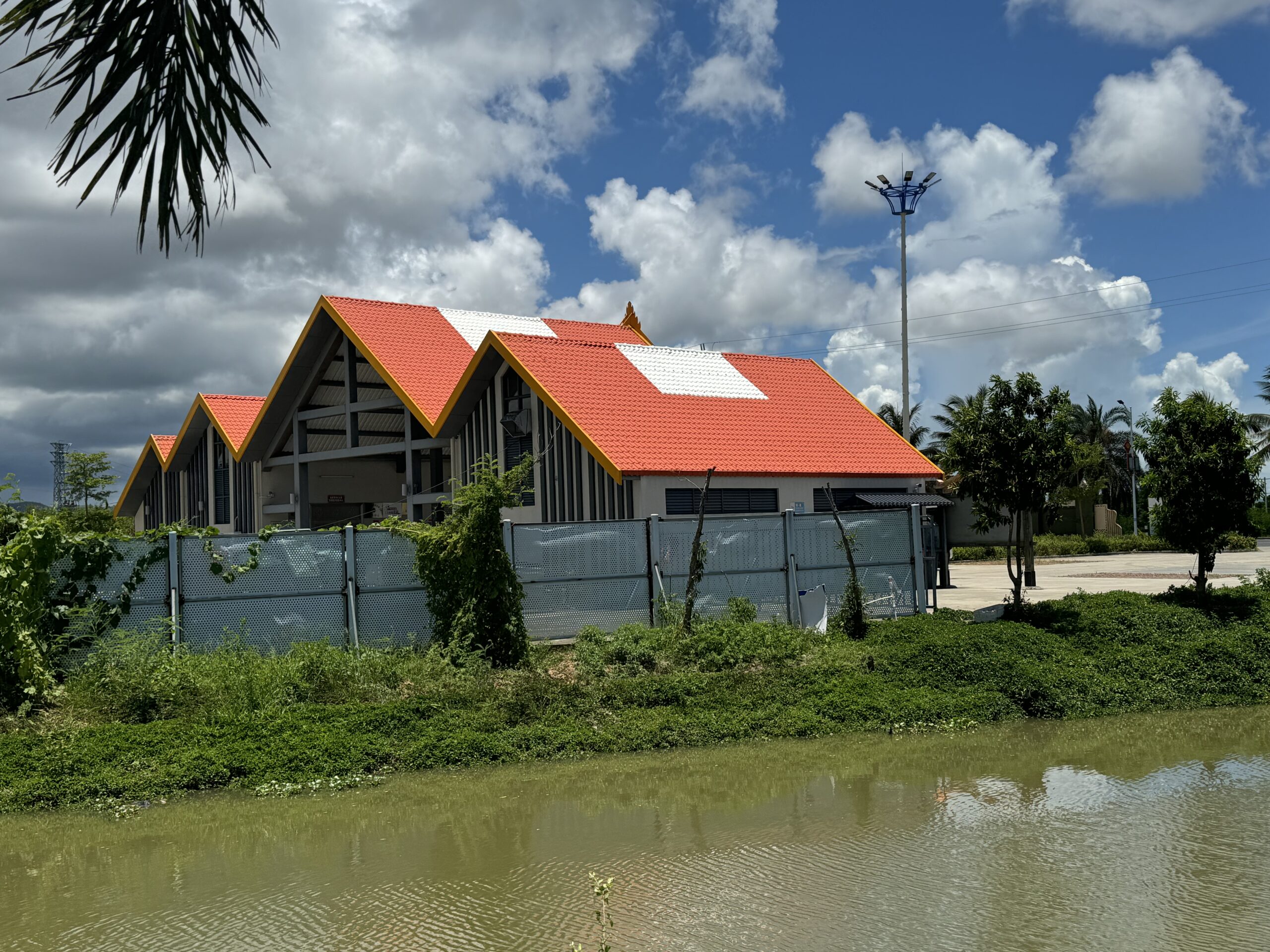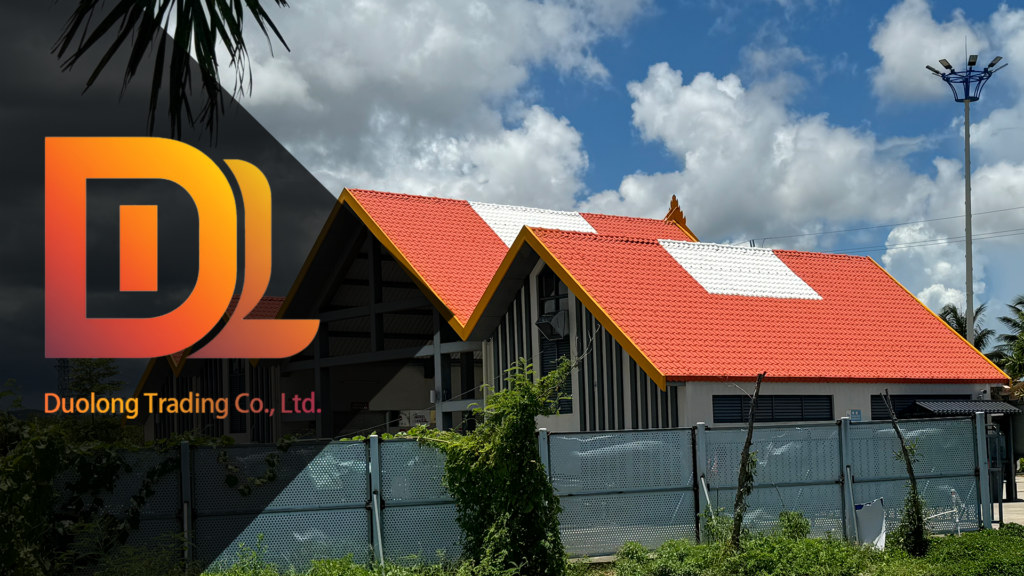In large-scale construction projects, roofing is one of the most cost-sensitive and logistically demanding components. A single mistake in estimating roofing material requirements can create ripple effects across the entire project. Over-ordering materials ties up capital, creates storage challenges, and increases waste, while under-ordering leads to delays, costly emergency shipments, and dissatisfied clients. In Southeast Asia, the Middle East, and Africa—regions marked by rapid urbanization and diverse climate conditions—these risks are even more pronounced. Roof designs often vary from simple gable structures to complex industrial warehouses, while tropical monsoons and strong coastal winds place additional stress on planning accuracy. For wholesalers, contractors, and developers, accurate roofing material calculation is more than a technical task—it is a critical business decision that directly impacts profitability, project timelines, and long-term trust with stakeholders.
Why Accurate Calculation Matters
Accurate roofing material estimation is a cornerstone of project efficiency and financial control. For large projects, even a small percentage error can translate into significant financial impact. Over-ordering ties up working capital, forces contractors to arrange additional on-site storage, and increases the risk of damage or theft of surplus materials. In contrast, under-ordering can be even more disruptive: work halts while waiting for extra supplies, project deadlines are missed, and penalty clauses in contracts may be triggered. The logistical challenges of international procurement—such as shipping times, customs clearance, and inland transport—make miscalculations especially costly in regions like Southeast Asia, the Middle East, and Africa. Beyond dollars and logistics, accuracy is also about professional credibility. When contractors provide reliable, precise estimates, they build stronger trust with developers and property owners, positioning themselves as dependable partners for repeat business and larger tenders.

Roof Measurement Methods
Roof measurement is the foundation of accurate material calculation, and for large projects, the chosen method can determine whether the estimate is realistic or flawed. Traditionally, contractors have relied on manual methods: measuring the building’s footprint (length × width), adjusting for roof pitch using trigonometric factors, and then adding allowances for overhangs, ridges, and valleys. While effective for smaller residential projects, this approach becomes time-consuming and error-prone on expansive commercial or industrial roofs.
Modern projects increasingly employ drone surveying and digital measurement tools. Drone technology allows contractors to capture high-resolution aerial images, which are then processed through photogrammetry software to generate precise 3D roof models. This method not only reduces human error but also improves safety by eliminating the need for workers to climb large, unfinished structures. In Southeast Asia, where many projects involve wide-span warehouses and factories, drones can cover thousands of square meters in a fraction of the time of manual surveying.
Another advanced approach involves software-based estimation tools. Roofing calculators integrated with CAD or BIM (Building Information Modeling) platforms allow for automatic extraction of roof dimensions directly from design files. These tools also factor in roof complexity—such as skylights, HVAC penetrations, or irregular geometries—that manual measurement might overlook. By combining software outputs with field verification, contractors achieve a balance between digital precision and on-site accuracy.
Each method has its place: manual measurement remains useful for smaller projects and quick checks, drones excel in large-scale coverage and safety, while CAD/BIM integration ensures early design-stage accuracy. For large projects in Southeast Asia, the most reliable results often come from a hybrid approach: digital measurement for speed and scale, paired with manual verification to account for on-site conditions such as material overlaps or structural deviations. Ultimately, the accuracy of measurement is not just a technical detail—it directly determines procurement planning, cost efficiency, and project success.
Roofing Material Calculation Formulas
Once roof measurements are determined, the next step is translating dimensions into material requirements. The basic formula is straightforward:
Roof Area ÷ Effective Coverage per Tile/Sheet = Quantity Required
However, this formula must be adjusted for several critical factors: roof slope, panel overlaps, and wastage allowances. For example, a roof with an actual surface area of 5,000 m² cannot simply be divided by the manufacturer’s “nominal coverage” because effective coverage is always less than theoretical size. Each tile or sheet overlaps with the next, reducing the usable area per piece. Typically, overlaps reduce coverage by 8–12%, depending on slope and wind exposure.
Wastage is another essential factor. During installation, material is lost due to cutting at roof edges, ridges, and valleys. For large, simple roofs such as warehouses, adding 5% wastage is generally sufficient. For complex roof designs with multiple valleys, dormers, or skylights, allowances may increase to 8–10%.
Different roofing materials also have distinct coverage characteristics. ASA synthetic resin tiles usually provide an effective coverage width of 800–960 mm per sheet, depending on profile. APVC anti-corrosion sheets offer similar ranges but may vary with thickness. FRP transparent sheets require additional consideration because they are often used in combination with opaque tiles, meaning planners must calculate both the transparent and non-transparent areas separately.
By applying the correct formulas and adjustments, contractors and wholesalers can ensure that material orders are precise. For large projects, these calculations should always be cross-verified with manufacturer data tables, which specify effective coverage per product line, to minimize risk of shortages or excess.

Case Study: Calculating Materials for a 5,000 m² Warehouse Roof
Consider a logistics warehouse with a gable roof, measuring 100 meters in length and 50 meters in width, giving a footprint of 5,000 m². With a roof pitch of 15°, the actual roof surface area increases by a slope factor of approximately 1.04, resulting in a total roof surface area of 5,200 m².
Next, overlaps must be accounted for. The chosen material is ASA synthetic resin tiles, each sheet measuring 2.2 meters in length with an effective coverage width of 0.88 meters, giving an effective coverage area of 1.94 m² per sheet. With overlaps considered, the effective coverage reduces to about 1.75 m² per sheet.
Using the formula: 5,200 m² ÷ 1.75 m²/sheet = 2,971 sheets
To this number, we must add wastage allowance. Since the warehouse roof is relatively simple, a 5% allowance is appropriate: 2,971 × 1.05 = 3,120 sheets (rounded).
Beyond base tiles, accessories must be included. For a 100-meter roof ridge, ridge tiles are required, typically at one ridge tile per meter = 100 ridge tiles. Fasteners are generally estimated at 6–8 screws per square meter, which for 5,200 m² equates to approximately 36,000–42,000 screws. Sealant usage depends on overlap length, but for this case, around 120 tubes are typically required.
The final order for this 5,000 m² warehouse project would therefore be approximately:
- 3,120 ASA resin tile sheets
- 100 ridge tiles
- 36,000–42,000 screws
- 120 sealant tubes
This calculation illustrates how slope, overlaps, and accessories dramatically affect material requirements, and why accurate, step-by-step estimation is essential for large projects.
Common Mistakes and Pitfalls
Even experienced contractors and wholesalers can fall into traps when calculating roofing material requirements, especially on large projects where small errors compound into major financial consequences. One frequent mistake is ignoring overlaps and cut losses. Estimating based on nominal sheet size instead of effective coverage leads to significant shortfalls once installation begins, forcing last-minute reorders and shipment delays. Another common oversight is forgetting accessories such as ridge tiles, screws, and sealants. While these may seem secondary, underestimating them can halt progress on-site when crews run out of essential fastening or sealing supplies.
A third pitfall is using generic formulas without adjusting for material type. Each roofing material—ASA resin tiles, APVC sheets, or FRP panels—has unique coverage ratios and expansion properties. Applying a “one-size-fits-all” formula ignores these differences, resulting in either waste or shortages. Lastly, contractors often neglect wastage allowances, assuming clean designs will not require additional material. In practice, even simple warehouse projects require cutting at edges, valleys, and ridges, while more complex roofs can generate 8–10% unavoidable waste.
These errors may appear minor at the planning stage but can escalate quickly. Shortages create idle labor costs and extend project timelines, while excess orders tie up capital and increase handling risks. By recognizing and avoiding these common mistakes, project stakeholders can maintain tighter control over both budgets and delivery schedules.

Tips and Professional Recommendations
To achieve accurate and reliable roofing material calculations, contractors and wholesalers should apply a few essential best practices. First, always include a buffer allowance of 5–8% for cutting and installation losses. This ensures sufficient material is available to handle on-site adjustments without risking shortages. For complex roof designs with multiple valleys or skylights, allowances should lean closer to 10%.
Second, rely on manufacturer coverage tables rather than generic assumptions. Each roofing product has its own effective coverage width, overlap requirements, and expansion tolerances. Consulting product-specific data ensures calculations reflect real-world performance rather than theoretical estimates.
Third, establish a practice of cross-verification with suppliers. Before finalizing orders, compare your calculations with supplier recommendations to confirm that the ordered quantity aligns with available stock, shipping timelines, and accessory requirements. This collaboration helps prevent mismatches between design and delivery, especially in international projects where logistics are more complex.
Finally, integrate technology with field experience. Use CAD/BIM software or drone surveys for efficiency, but always validate with on-site inspections. Combining digital precision with practical judgment creates the most accurate results. By following these professional recommendations, stakeholders not only reduce financial and logistical risks but also enhance client trust, laying the foundation for repeat business and stronger partnerships.
Conclusion and Call to Action
Accurate roofing material calculation is not simply a technical step—it is a decisive factor in the success of large construction projects. By measuring correctly, applying the right formulas, and accounting for overlaps, wastage, and accessories, contractors and wholesalers can prevent shortages, reduce excess, and deliver projects on time and within budget. More importantly, precise estimation strengthens credibility with developers and property owners, building the foundation for repeat business and long-term partnerships.
For wholesalers, contractors, and developers operating in Southeast Asia, the Middle East, and Africa, the challenges of climate, logistics, and scale make accurate calculations even more critical. This is where Duolong provides value beyond materials. Our ASA synthetic resin tiles, APVC anti-corrosion sheets, and FRP transparent panels are engineered for performance, but we also provide calculation guidance, technical manuals, and professional consultation to help you plan confidently.
If you are preparing for a large roofing project, don’t leave material estimation to chance. Partner with Duolong for both reliable products and expert technical support. Contact us today to request detailed coverage tables, project-specific calculation assistance, and tailored solutions that ensure your project achieves maximum durability, efficiency, and profitability.


